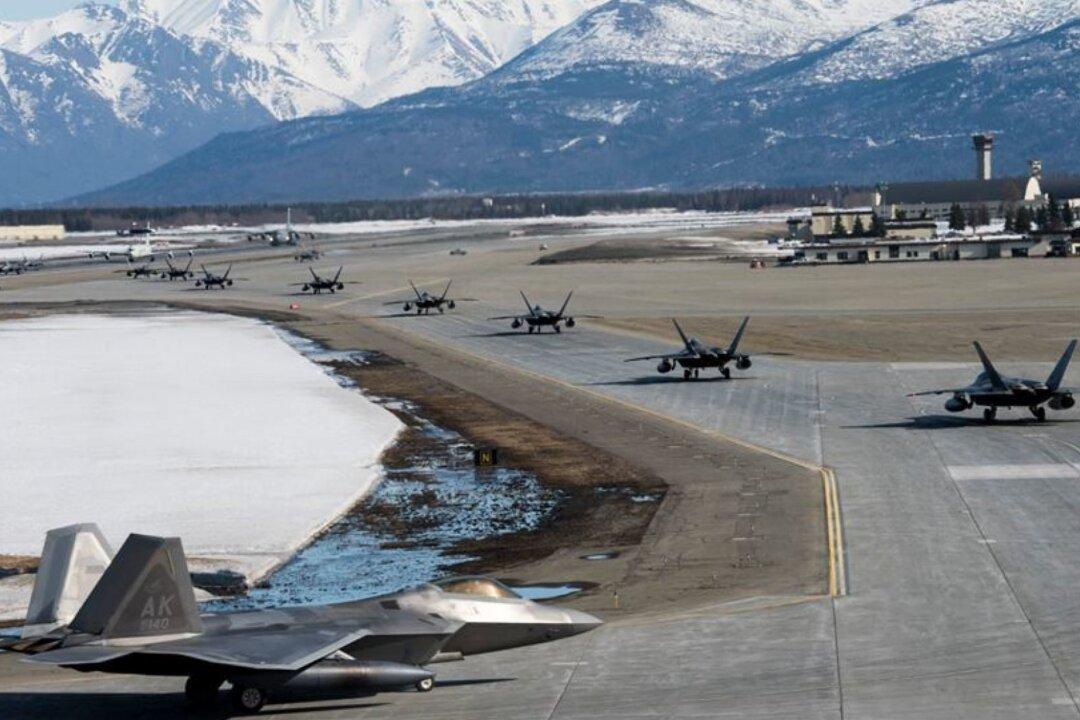Dozens of F-22 Raptors “elephant walked” on a runway at a military base in Alaska on March 26 in a display of force.
An “elephant walk” refers to the close formation of military aircraft right before takeoff.


Dozens of F-22 Raptors “elephant walked” on a runway at a military base in Alaska on March 26 in a display of force.
An “elephant walk” refers to the close formation of military aircraft right before takeoff.